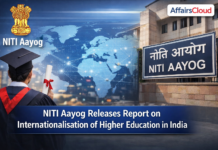
The International Food Policy Research Institute (IFPRI) released ‘Global Food Policy Report (GFPR) 2022- Climate Change & Food Systems’ stating the number of Indians at risk from hunger is expected to be 73.9 million by 2030 i.e. an increase by 23%; and 45 million by 2050. With Climate Change (CC) effect, this number will change to 90.6 million in 2030, and 44.9 in 2050.
- Globally 593.3 million people at risk of hunger by 2030 with CC as a factor, and 478.7 million by 2050.
- In the 2021 Global Hunger Index, India ranked 101 out of the 116 countries with a score of 27.5 (serious).
Report Assessment:
These projections are part of IFPRI’s IMPACT model which evaluates the impact of CC on aggregate food production, food consumption (kcal per person per day), net trade of major food commodity groups, and the population at risk of hunger.
- It was developed with inputs from the Consortium of International Agricultural Research Centers (CGIAR) and other leading global economic modeling efforts.
Indian Scenario:
i.India’s risk of hunger is highest among all countries.
ii.By 2030, CC could negatively impact India’s food production and drop by 16%.
iii.The agricultural production data from 1967 to 2016 for several crops showed that average land productivity decreased as average temperature increased.
iv.The aggregate food production index will also drop from 1.6 to 1.5.
v.The global food production may increase by 60% by 2050, however, 50 crores of Indians would still be at the risk of going hungry. Of these 50 crores, 7 crore people would suffer from hunger due to climate change.
vi.Sundarbans, is also facing the damaging impact of CC. Often called the cyclone capital of India, Sundarbans’s agro-economy has been battered by multiple cyclonic storms in recent years viz. Fani (May 2019), Bulbul (November 2019), Amphan (May 2020) and Yaas (May 2021).
vii.CC will not impact the average calorie consumption of Indians and this is projected to remain roughly the same at 2,600 kcal per capita per day by 2030.
viii.The average temperature across India is projected to rise by between 2.4°C and 4.4°C by 2100. Similarly, summer heat waves are projected to triple by 2100 in India.
ix.Summer monsoon precipitation has shown declining trends over the last few decades, with larger decreases over the main region of the Indo-Gangetic belt.
x.Projections show yields of India’s crops falling by 1.8 to 6.6% by mid-century (2041–2060) and by 7.2 to 23.6% by end-century (2061–2080).
Key Points:
i.The emission of carbon dioxide per year has drastically increased between 1990 and 2018, particularly in developing countries.
ii.Food systems contribute more than a third of the greenhouse gas (GHG) emissions causing climate change, making reducing them essential to any mitigation effort.
iii.Agriculture, forestry, and other land use (AFOLU) is currently the only sector with serious potential to decrease net emissions sink through creation and protection of carbon sinks in forests, oceans, and soils.
iv.Higher temperatures, changing precipitation patterns, sea-level rise, and growing frequency and intensity of extreme weather events such as droughts, floods, extreme heat, and cyclones are the key reasons of reducing agricultural productivity, disrupting food supply chains, and displacing communities.
Identification of 6 Policy Priorities:
In the report, researchers from IFPRI, the Alliance of Bioversity and the International Center for Tropical Agriculture (CIAT) as well as the International Water Management Institute (IWMI) and other partners identify Six Policy Priorities, by focusing on developing countries, those can be implemented now to make food systems more resilient to CC. These are as follows:
- Investments in R&D for innovation:
- Improved governance of resources
- Healthier diets and more sustainable production
- Stronger value chains
- Inclusion and social protection
- Climate-smart finance
Click Here for Official report
Recent Related News:
i.As per the report of Climate Change 2022, the Sixth Assessment – Working Group II reports on Impacts, Adaptation and Vulnerability by Intergovernmental Panel on Climate Change (IPCC) there will be rise in water level of The Indus, Ganga and Brahmaputra river basins by 2050 and 2100.
ii.Confederation of Indian Industry (CII) and Bain & Company jointly prepared a report titled ‘Innovation in India’s Rural Economy: disruptive business models are stimulating inclusive growth in agriculture and rural finance’ which revealed that agriculture sector grew by 11% Compound Annual Growth Rate (CAGR) during 2015-20 & the growth of the agriculture sector with highest disruption in terms of smartphone and internet penetration.
About International Food Policy Research Institute (IFPRI):
Director General– Johan Swinnen
Headquarter– Washington, DC, United States




